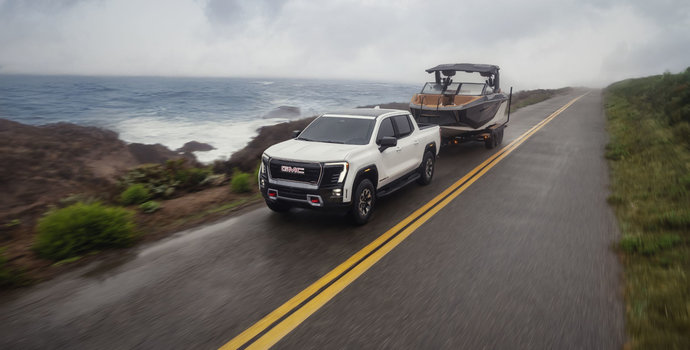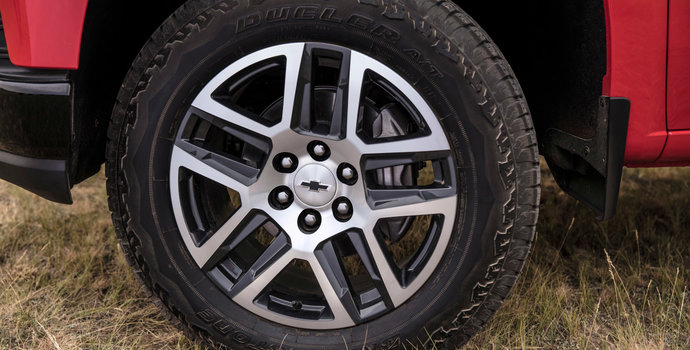How to Break a Vehicle Lease
Ending a car lease early typically comes with financial repercussions, but there are ways to get out of a car lease without penalty. We break down five ways to get out of a car lease below. Each approach requires a different level of time, work, and money to make it work. Make sure you consider your options carefully. Take the time to weigh your choices and find the best fit for your situation.
#1 — Lease Transfer
Arguably, the best option for most people is to transfer their car lease to someone else. If you can find someone willing to take over your lease, it is the option that will cost you the least money and have zero financial impact on you. However, it does take some work to find someone and then go through the steps to make the transfer.
If you’re wondering why someone else would want to take over your lease, it is because they can get all the benefits of leasing the car without some of the extra costs. For example, if you made a larger down payment to reduce the monthly payments when someone else takes over the lease, they get the lower payments without making the down payment. It allows people to get into a lease and usually get a better deal. The downside is the lease will be for a shorter term, but that might also be what they want.
Here is a basic summary of how a lease transfer in Ontario works:
- Find someone who is willing to take over your lease for the remaining term and payments
- Get the new person approved for the necessary credit to take over the lease by you AND the leasing company
- Pay necessary lease transfer fees and taxes to the bank, dealership, and/or manufacturer
- Get the new person licensing for the vehicle
- Fill out the necessary lease transfer paperwork
Depending on the manufacturer of your vehicle, there might be some restrictions on transferring your lease — some will place liability on the original lease owner if the person taking it over fails to make payments, and some do not allow you to transfer it within the first 12 months of the lease, and so on. Ensure you read your lease contract thoroughly to check for any restrictions for transferring a lease so you know it is worthwhile.
It’s worth noting that in Ontario, you can gift a car to a family member, allowing you to transfer car ownership without paying retail sales tax. However before you do that, you will need to buy out the lease, which we outline in method #2 below. Gifting a car in Ontario can be a great option if you have a family member who is willing to take ownership of the vehicle and cover costs associated with buying out the lease.
You can also go through lease take-over websites, such as Lease Busters, to make transferring a car lease much easier. These websites allow you to create a listing with your vehicle’s and lease’s information that people looking to take over a lease can browse through. It makes finding someone to take over your lease very easy, and they can help guide you through all the required financial and legal paperwork. Some will even work with the leasing company to help handle some details.
In the end, the process is usually fairly straightforward:
- Pay a fee to have your vehicle listed on their website
- Speak on the phone with their analyst to answer questions about your car and situation
- Fill out a form answering questions on your vehicle (year, make, model, odometer) and your lease (monthly payment with taxes, without taxes, annual km limit and penalty, etc.)
- Take photos of your vehicle and write a basic description of its features and options
- Respond and negotiate with people interested in taking over your car lease
Once you get to the negotiation phase, the person offering to take over your lease can ask for things like winter tires, pay all the lease transfer fees, an additional cash down payment, etc. It is up to you whether you agree to such negotiations. However, if you have an outstanding lease with a low interest rate and monthly payments and your vehicle is in good condition, you can negotiate with them. You can see if they’ll pay the lease transfer fee, pay for the winter tires, and so on.
This puts you somewhat at the mercy of the other party’s cooperation, so the process can be as complicated or easy as they are willing to be. However, you always have the option to cut all communication if they become too difficult about it. Once you reach an agreement with someone, the basic process for going through the lease transfer process, which was listed above, takes over.
The process through these lease take-over businesses can take as little as a week, from start to finish, depending on how quickly you can seal the deal with an interested buyer. To avoid paying another month’s payment, start the process at the beginning of the month. This should give you enough time to complete the process before the next month’s payment.
Ultimately, transferring a lease is a great way to get out of a car lease without penalty, costing the least out of any other option, and gets you out of your lease clean with no impact on your credit score.
#2 — Buy Out Your Leased Car
At any point in the lease, you can buy out its remaining cost and term. You would be buying it out from the lease company, and in doing so, you would own the vehicle free and clear. This can be an expensive option in terms of upfront costs, as you will need to have the money to pay for the value of the vehicle and any remaining costs and fees of the lease. However, there are ways to mitigate that, and in the end, you can recoup some of its value or break even.
The first step is to call the lease company and explain that you are looking into buying out the car lease and how much it would cost. If you made a large down payment at the start of the lease, you would pay less to buy it out. You will also have to pay an early termination fee of around $200 to $500 plus the depreciation cost for the remaining lease term, which is used to help determine your monthly lease payments. If you buy it out, you do NOT have to pay any penalties for damage or for exceeding the annual kilometre limit.
Next, consider taking out a loan to help afford the cost of buying the vehicle out of the lease. Find out what the loan would cost you. Then do some in-depth research into what the car might be worth on the resale market in your area based on the year, make, model, trim, kilometres, and options. You can use websites like AutoTrader, CarGurus, Kijiji, and Canadian Black Book to help with this research.
Now it is time to do the math with all the information you’ve gathered. Take the costs associated with buying out the lease, then taking out a loan to pay for the buyout, and subtract the cost of what you can sell the vehicle for. Odds are there will be a small amount remaining on your new loan, so you should calculate how long and how much it would take to pay the loan off. Put all of this together to see how much the whole process will cost you in the end.
Buying out a car lease will likely cost you more than transferring the lease to someone else. However, it is one of the quickest ways to get out of a car lease early, so it is likely the best option for people who need to wash their hands of the lease and the vehicle quickly.
Useful Tip!
You can use Car Value Estimation Tools online to get an idea of the range of prices you can sell your car for if you buy out the lease. AutoTrader.ca has a good one that uses the year, make, model, trim, transmission, kilometres, general condition of the vehicle and postal code to give you an estimated range for how much similar vehicles sell for in your area.
#3 — Trade In Your Leased Car
If you are too far from the end of your lease, it is still possible to trade in your current vehicle, lease to the dealership, and pick up a new car with a new lease. It is a straightforward and quick process to get out of your current lease. However, it can wind up being more expensive in the long term. This is usually a better option for people who aren’t necessarily in financial difficulty and don’t want to stop having a vehicle. It is generally for people who do not like the current vehicle they are leasing and want to get a new one without paying hefty termination fees.
To trade in your current lease for a new one, simply go to your dealership or leasing company and ask if they will accept a trade-in for a new lease. If they allow you to trade it in, they will include any costs, fees, and penalties from your original lease into your new lease. For example, if the vehicle is worth less than what you still owe on the lease, you must add the difference to the new lease when calculating the payments. Similarly, any excess damage or annual kilometre penalties you have incurred on the original vehicle will also be added to the new lease.
It can be more expensive over time, but it allows you to spread these costs over the period of your new lease rather than paying it all upfront. This can get you into a dangerous game of incurring higher costs and payments, so it is not advisable to trade in your lease more than once in a row. It is only a viable option to do once if you need a new vehicle. For example, say you lease a small sedan and a year or two after you have a child and need a bigger family vehicle, you can trade in the small sedan for a bigger SUV or van as long as you can afford the new lease payments.
If you want to know more about how car lease payments are calculated to understand how much you will owe to buy out or trade in your lease, you can read more about how lease payments are calculated here.
#4 — Early Vehicle Lease Termination
At this point, if you cannot use any of the previous options listed above, you are getting into much more expensive ways to end your lease early. There are very few circumstances where it would not be better to ride out the rest of the lease, but if necessary, you can terminate it.
An early return of a leased vehicle differs from buying out the lease because you are not paying to purchase the car. You are just paying to end the lease without keeping the car. This means you are paying out the remainder of the lease's costs, fees and penalties without getting anything out of it except for getting out of the lease. In addition to the standard costs, fees and penalties, you must also pay a termination fee. If you cannot afford to make all the termination payments, there may also be a penalty to your credit score.
If you are in highly unusual circumstances and this is the best option, you can always negotiate a solution with the leasing company. In the end, you will still probably wind up paying a lot more than you’d like, but depending on the circumstances, they might offer some leniency in some ways. You should not terminate your car lease early without seriously trying all other options first. Do whatever you can to make them work, and you will save yourself a lot of money.
Did You Know?
When you lease a vehicle, you can purchase extra financial protection for cases where you find yourself in a financial emergency and can no longer make payments. The policy can cover payments for you until you’re back on your feet, or let you return the leased vehicle with no penalties (up to a certain amount).
#5 — Surrender Your Leased Car Voluntarily
This is your absolute last resort to end your car lease before it is over. This should only ever be done if you absolutely cannot afford to make the payments or any of the other options above. If you have to do this, there is an optimal process to follow.
First, check if you purchased something called Insurance Insight, Job Loss Protection, or any other kind of financial protection plan. They give special protection for this exact type of situation, where due to sudden changes in your life you are unable to make your payments. For example, you might have had a traumatic and long-term illness or injury or a sudden job loss where your ability to make future payments has been rendered impossible. These types of insurance allow you to return the vehicle without any financial penalties or damage to your credit score.
If you do not have any protection plan like that, you should first call the leasing company and tell them that you cannot make future payments and want to surrender the vehicle to them. Taking it to them can help you avoid other fines.
Some leasing companies have a policy where if you voluntarily surrender the vehicle, they will sell the car and reduce the money you owe by the amount for which they sell it. They might still pursue you for the remaining payment owed, but it will be substantially less than it would be otherwise. This is another reason to alert them ahead of time and offer to surrender it to them directly.
This has the biggest cost in terms of payments and penalties, and in terms of how much your credit score is affected. It should only be your absolute last resort if all other options are impossible.
FAQ (Frequently Asked Questions)







